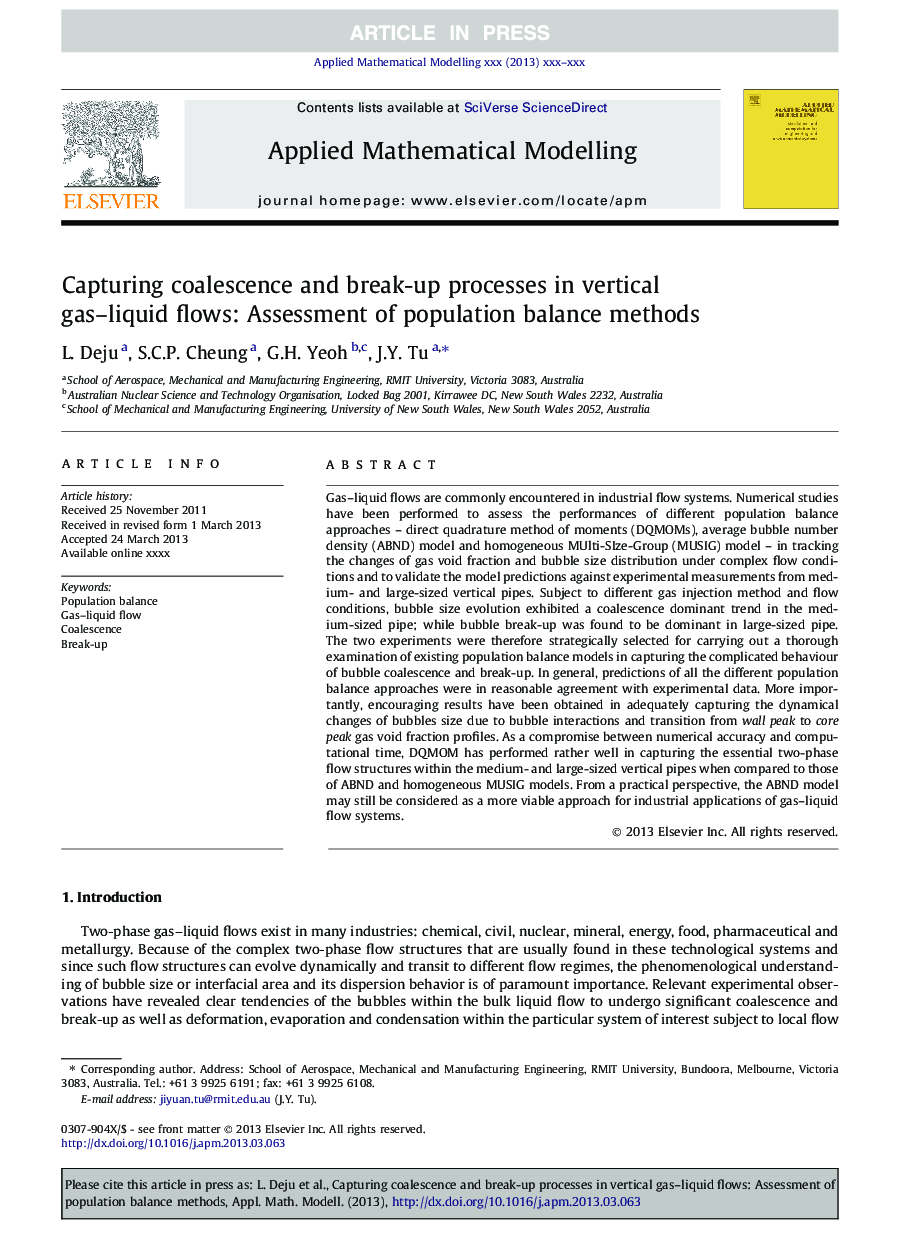| کد مقاله | کد نشریه | سال انتشار | مقاله انگلیسی | نسخه تمام متن |
|---|---|---|---|---|
| 8052969 | 1519416 | 2013 | 21 صفحه PDF | دانلود رایگان |
عنوان انگلیسی مقاله ISI
Capturing coalescence and break-up processes in vertical gas-liquid flows: Assessment of population balance methods
ترجمه فارسی عنوان
گرفتن فرایندهای هم انباشتگی و شکستن در جریان عمودی گاز مایع: ارزیابی روش های توازن جمعیت
دانلود مقاله + سفارش ترجمه
دانلود مقاله ISI انگلیسی
رایگان برای ایرانیان
کلمات کلیدی
توازن جمعیت، گاز مایع جریان، انعطاف پذیری، شکستن
موضوعات مرتبط
مهندسی و علوم پایه
سایر رشته های مهندسی
مکانیک محاسباتی
چکیده انگلیسی
Gas-liquid flows are commonly encountered in industrial flow systems. Numerical studies have been performed to assess the performances of different population balance approaches - direct quadrature method of moments (DQMOMs), average bubble number density (ABND) model and homogeneous MUlti-SIze-Group (MUSIG) model - in tracking the changes of gas void fraction and bubble size distribution under complex flow conditions and to validate the model predictions against experimental measurements from medium- and large-sized vertical pipes. Subject to different gas injection method and flow conditions, bubble size evolution exhibited a coalescence dominant trend in the medium-sized pipe; while bubble break-up was found to be dominant in large-sized pipe. The two experiments were therefore strategically selected for carrying out a thorough examination of existing population balance models in capturing the complicated behaviour of bubble coalescence and break-up. In general, predictions of all the different population balance approaches were in reasonable agreement with experimental data. More importantly, encouraging results have been obtained in adequately capturing the dynamical changes of bubbles size due to bubble interactions and transition from wall peak to core peak gas void fraction profiles. As a compromise between numerical accuracy and computational time, DQMOM has performed rather well in capturing the essential two-phase flow structures within the medium- and large-sized vertical pipes when compared to those of ABND and homogeneous MUSIG models. From a practical perspective, the ABND model may still be considered as a more viable approach for industrial applications of gas-liquid flow systems.
ناشر
Database: Elsevier - ScienceDirect (ساینس دایرکت)
Journal: Applied Mathematical Modelling - Volume 37, Issues 18â19, 1 October 2013, Pages 8557-8577
Journal: Applied Mathematical Modelling - Volume 37, Issues 18â19, 1 October 2013, Pages 8557-8577
نویسندگان
L. Deju, S.C.P. Cheung, G.H. Yeoh, J.Y. Tu,
